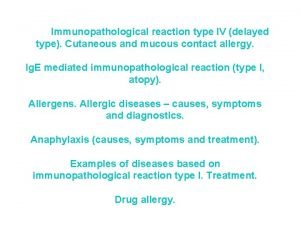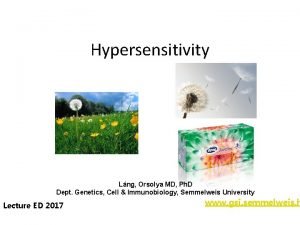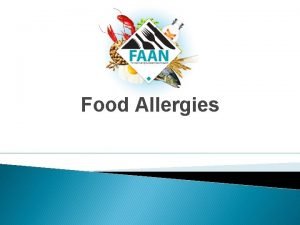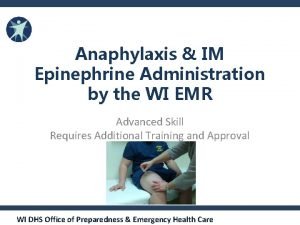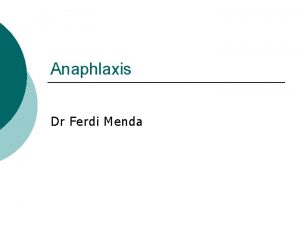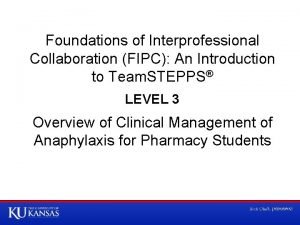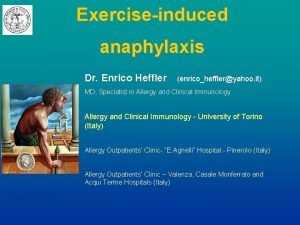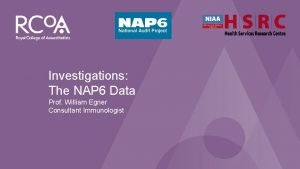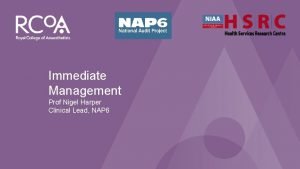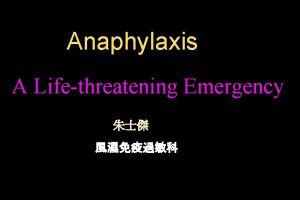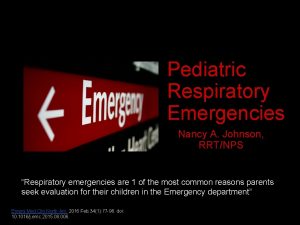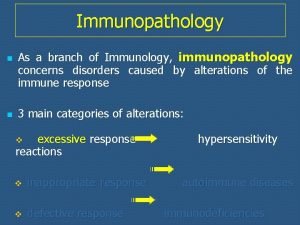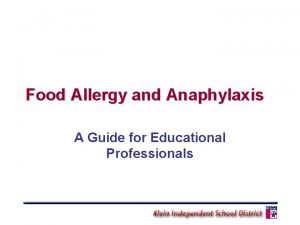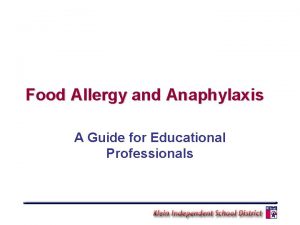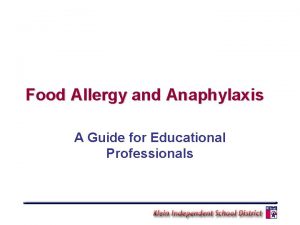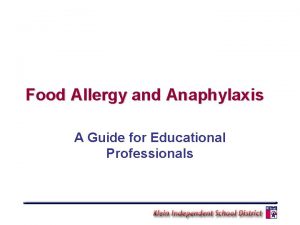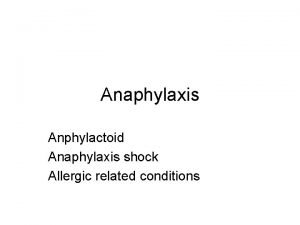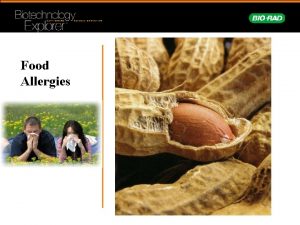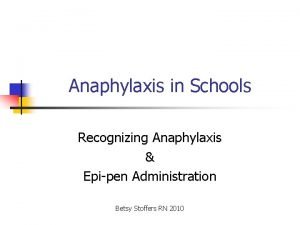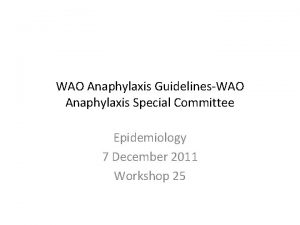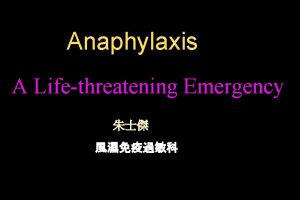Food Allergy and Anaphylaxis A Guide for Educational














- Slides: 14

Food Allergy and Anaphylaxis A Guide for Educational Professionals

Food Allergy Basics • Affects 12 million Americans (1 in 25 or 4% of the population) • 16 -18% of school-age children who have food allergies have had a reaction at school • It is estimated that 25% of the in school anaphylactic reactions occur before the student has been diagnosed with food allergy

Food Allergy Basics • Food allergy (immune response) vs. Food Intolerance (Lacking enzyme for digestion) • No cure for food allergy – strict avoidance is the key

TOP 8 Foods Account for 90% of all Food Allergy Reactions • • Milk Soy Peanut Fish • But almost any food could cause a reaction • • Egg Wheat Tree Nut Shellfish

Food allergy basics • Seafood allergy is most common – 6. 9 million, mostly adults • Peanut & tree nut next most common – 1. 8 million affected by each • Milk (900 K) and egg (600 k) more common among children/ some will outgrow

Food Allergy Basics • Most reactions caused by ingestion • Localized reactions caused by touch – hives • Inhalation reactions are possible, but rare – Cooking fumes – Peanut dust

Anaphylaxis • Severe, life-threatening allergic reaction • Food allergy is leading cause of anaphylaxis • Other causes – insect , medication, latex, exercise, unknown

Anaphylaxis • Symptoms can begin in minutes or up to 2 hours after exposure • Risk factors: – Asthma – Peanut or tree nut allergy – Teenagers (risky behavior)

Food in Schools – Proceed With Caution • Students may not know they have allergy • Student may deny allergy • Trace amounts of allergens can be found in unsuspecting foods – read labels carefully • Avoid food on the TOP 8 list

Possible Symptoms of an Allergic Reaction Skin Gut Respiratory Cardiovascular Neurologic • Hives • Swelling • Itchy red rash • Eczema • Cramps • Nausea • Vomiting • Diarrhea • Itchy, watery eyes • Runny nose • Stuffy nose • Sneezing • Coughing • Itching/swelling of lips, tongue, throat • Change in voice • Difficulty swallowing • Chest tightness • Wheezing • Repetitive throat clearing • Drop in blood pressure • Fainting • Shock • Chest pain • Feeling of impending doom • Weakness

How children describe a reaction • • My tongue is hot or burning Something is poking my tongue I feel hair on my tongue Something is stuck in my throat My tongue is heavy or full I feel bugs in my ear My throat feels thick

Treatment – Individualized Health Plan • Benadryl for simple allergy • Epinephrine for anaphylaxis – Administer promptly – Always call 911 – Contact nurse – Second dose

Treatment • Texas law allows student to carry epinephrine injector with physician, parent, school nurse and administrative permission – School nurse will notify you if a student in your class is carrying this life saving medication • Consider learning how to administer epinephrine so you can assist in an emergency

QUESTIONS? ? ?
 Food allergy testing auckland
Food allergy testing auckland Causes of anaphylactic reaction
Causes of anaphylactic reaction Anaphylaxis grade
Anaphylaxis grade Anaphylactoid
Anaphylactoid Anaphylaxis onset
Anaphylaxis onset Dose of epinephrine in anaphylaxis
Dose of epinephrine in anaphylaxis Anaphlaxis
Anaphlaxis Allergist delta dental
Allergist delta dental Interprofessional care for anaphylaxis
Interprofessional care for anaphylaxis Anaphylaxis
Anaphylaxis Nap 6 summary
Nap 6 summary Anaphylaxis treatment
Anaphylaxis treatment Anaphylaxis treatment
Anaphylaxis treatment Anaphylaxis
Anaphylaxis Hypersensitivity types and examples
Hypersensitivity types and examples


